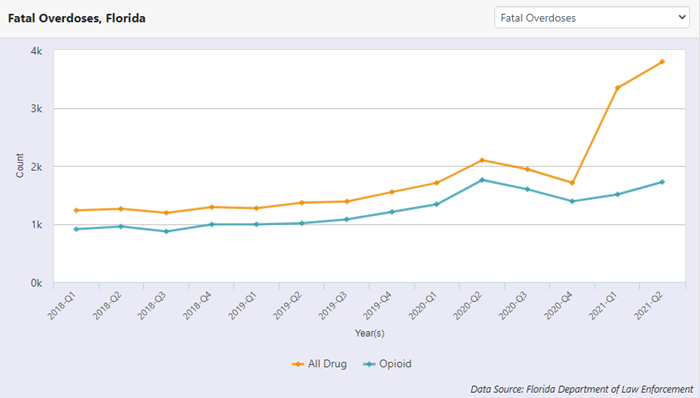We are bombarded with news of Fentanyl streaming over our southern border at an alarming rate during the last couple of years. Fentanyl killed over 100,000 Americans last year. Many of those deaths weren’t because people were “using” Fentanyl but unknown to the user, the drug was in some other kind of medication.
But we have also heard about the “opioid crisis” for several years. This crisis has affected every part of the United States and has hit rural areas particularly hard. The opioid crisis includes prescription drugs as well Fentanyl.
According to a study by the Federal Reserve Bank of Atlanta, substance abuse accounts for between 9 and 26 percent of the decline in prime-age labor-force participation between February 2020 and June 2021.
A 2016 report from the Department of Health and Human Services and the Substance Abuse and Mental Health Services Administration, stated more than 11 million people in the U.S. were addicted to opioids then, which include prescription drugs.
At that time it was estimated that more than 6 million men between ages 25 and 54 weren’t in the labor force and nearly half of those were taking pain medication. The study also stated that 1.4 million could be working but weren’t because they abuse opioids and/or have criminal convictions related to the abuse.
We think first of drugs making people not able to function satisfactorily at a job or even the criminal aspect. But there are other aspects to consider like low productivity, absenteeism, tardiness, attitude, the way they work with other employees, etc. There is also the fact that many drug abusers can’t pass the required drug test and so don’t apply for jobs.
Below is a chart showing fatal overdoses in Florida. Not surprisingly, overdose deaths increased during the Covid pandemic.

In 2020, there were 250 juvenile drug arrests in Okaloosa County according to the Florida Health Substance Use Dashboard.
There were 1,113 adult drug arrests during the same year.
Most counties have drug rehabilitation facilities but many people can’t or don’t avail themselves of the service. Many people languish for years falling through the cracks, go to prison or die. There are preventative services offered but again, people have to want to get well.
Of major concern is drug use proliferating in our schools. It is part of a broader mental health crisis.
Communities need to have a laser focus on this issue. The drug crisis affects lives, families, quality of life, safety, and yes, the employee workforce. Economic developers are a vital part of the work to create jobs, quality of life, safe and healthy, educated, communities. Educational, community, and business entities should gather stakeholders and have productive work sessions to come up with ways to combat the drug crisis together. There are those trying but a coordinated and organized, community-wide effort is needed.